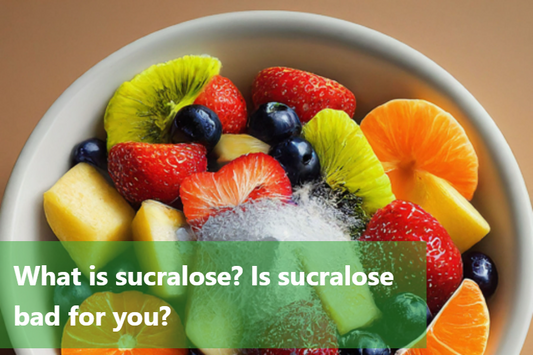Understanding the distinctions between varieties of brown sugar dispels misconceptions while illuminating proper applications in baking. Rather than a “healthy” alternative to white sugar, both light and dark brown sugar lend notable flavor depth courtesy of differing molasses concentrations.
-
Light brown sugar features mild yet distinctive caramel notes from a measured molasses infusion. Its versatile essence caters to recipes seeking a hint of complexity without overpowering sweetness.
-
Conversely, rich dark brown sugar showcases fuller-bodied molasses undertones for pronounced impact ideal for cookies, gingerbreads and sauces requiring a bold stripe of bittersweetness.
While nutrition content itself proves comparable to white sugar, brown sugar’s value lies in taste and texture modification. Chewy cookies shine with dark brown sugar’s influence. Banana breads welcome light brown sugar’s tempered sweetness. Discerning baking enthusiasts can deploy brown sugar types for precision flavor outcomes ranging from subtle to striking.
Appreciating brown sugar’s assets beyond superficial health assumptions allows full utilization in direction of culinary goals. Informed differentiation between light and dark varieties begets mastery over sweetness and unlimited recipe potential.
Is Brown Sugar a Natural or Added Sugar?
Brown sugar is a type of sweetener that is often considered an extra sugar rather than a natural one. It is made by mixing white sugar with molasses, which gives it its special color and taste. While molasses itself is a natural product of making sugar, adding it to white sugar makes brown sugar a processed sweetener. Unlike sugars found naturally in fruits, vegetables, and dairy products, brown sugar is made through an industrial process. This process involves refining and adding molasses to the white sugar, putting it in the category of extra sugars. Extra sugars are those that are not naturally in foods but are added during processing or preparation. It's important to be careful about eating extra sugar, as they are often linked to health problems like being very overweight, diabetes, and dental issues. While brown sugar can add flavor to different foods, it should be eaten in small amounts as part of a balanced diet. Knowing the difference between natural and extra sugars can help you make good choices about how much sugar you eat.
How is Brown Sugar Made?
-
Crushing of Sugar Cane/Sugar Beets: First, the sugar cane or sugar beets are crushed to extract their juices.
-
Separation of Liquid and Solid Components: The extracted juices are then processed to separate the liquid from the solid components.
-
Processing and Boiling: The separated liquid is further processed to remove impurities and then boiled until it thickens, producing molasses.
-
Incorporation of Molasses: Once the molasses are obtained, they are added back into refined white sugar to give brown sugar its characteristic color and flavor.
-
Adjusting Molasses Content: The proportion of molasses to sugar determines whether the brown sugar produced will be light or dark. Light brown sugar contains a lower molasses content, while dark brown sugar contains a higher proportion.
-
Cooling and Granulation: The mixture is allowed to cool and then granulate, resulting in the familiar brown sugar crystals used in recipes.
This process contributes to the rich, caramel-like taste and moist texture of brown sugar, making it a crucial ingredient in both baking and cooking.
How is brown sugar digested?
Brown sugar is a type of sugar that is commonly used in cooking and baking. When consumed, brown sugar goes through the process of digestion in the human body.
-
The digestion of brown sugar begins in the mouth, where the enzyme amylase starts breaking down the sugars into simpler forms. As it travels to the stomach, the acidic environment helps to further break down the sugar molecules.
-
Once in the small intestine, the brown sugar is broken down into glucose and fructose, which are then absorbed into the bloodstream. From the bloodstream, these simple sugars are transported to cells throughout the body, providing a source of energy for various bodily functions.
It is important to note that while brown sugar contains some molasses which gives it its characteristic color and flavor, its digestion process is similar to that of regular white sugar. However, brown sugar does contain some minerals such as calcium, potassium, and iron which can have additional effects on the body's digestive processes and overall health.
In conclusion, brown sugar is digested through a series of enzyme actions in the mouth and stomach, ultimately being broken down into glucose and fructose that are then absorbed into the bloodstream to provide the body with energy.
Is Brown Sugar Healthy?
|
Nutrient |
Brown Sugar (1 tsp) |
White Sugar (1 tsp) |
|---|---|---|
|
Calories |
17 kcal |
16 kcal |
|
Total Fat |
0 g |
0 g |
|
Saturated Fat |
0 g |
0 g |
|
Cholesterol |
0 mg |
0 mg |
|
Sodium |
1.4 mg |
0 mg |
Brown sugar is often thought to be a better choice than white sugar because it has a natural brown color and contains molasses. It has some calcium, potassium, iron, and magnesium, but not a lot. When it comes to calories and carbs, it's about the same as white sugar. Like other sweet things, it's best to use it in moderation. Each sweetener has its own nutrition and possible health effects. Whether brown sugar is "good" for you depends on your diet and how much you have. It's really important to keep all added sugars low for your health and feeling good.
To conclude:
Exploring the dimensions of brown sugar enlightens novice and veteran chefs alike on how a touch of molasses magic profoundly enhances both sweet and savory recipes without forfeiting balance. Beyond the familiar, humble granules lies rich flavor potential waiting to be harnessed.
While the nutritional composition of light and dark brown sugar mirrors refined white sugar, as all rank low on the glycemic index, brown sugar distinguishes itself through heightened tasting notes. The incorporation of cane molasses lends dampness for superior texture and introduces notes ranging from gentle caramel essence to outright toffee-forward boldness depending on variety.
This versatility makes brown sugar shine in diverse applications. It proves a potent yet harmonious addition to classic chocolate chip cookies, summery peanut butter and jam sandwiches, even Asian-glazed chicken or chili by providing contrasting sweet-savory appeal. Used judiciously in lieu of non-enhancing white sugar, brown sugar satisfies with full taste dimensionality minus excess quality assault on one’s palate or health. Informed, sparing use within balanced recipes illuminates brown sugar’s summit as an elevating foundation rather than mere superficial replacement for white alternative
This Blog post is an initiative by DiabeSmart, to provide accurate and Nutritionist / Doctor approved information related to Diabetes. DiabeSmart is India's first Food brand designed specifically for Diabetics, that has been clinically tested on Diabetics and Pre-Diabetics to deliver 55% - 70% lower Sugar spikes. DiabeSmart is part of Lo! Foods - India's leading brand for Everyday Functional Health foods.















